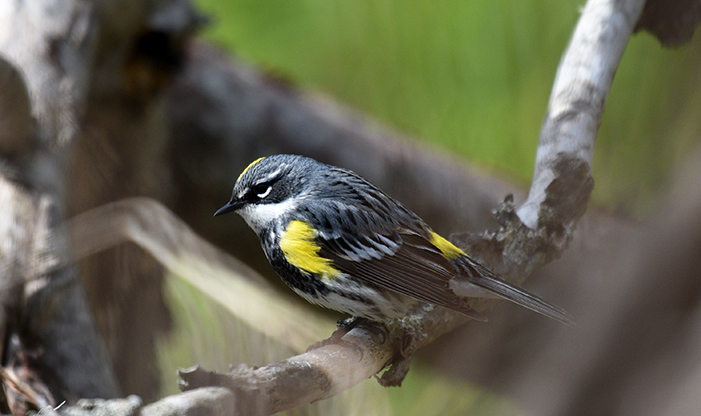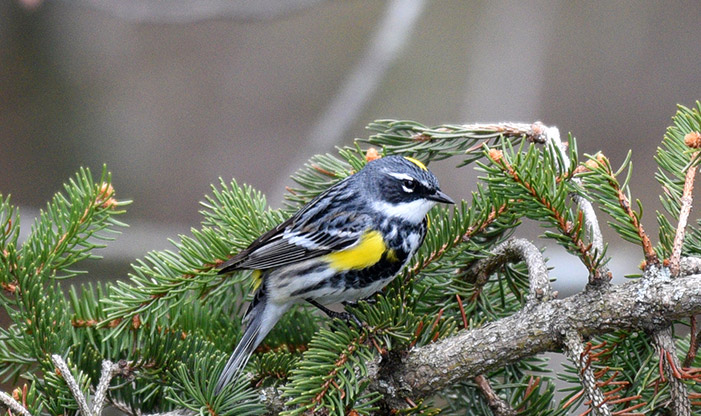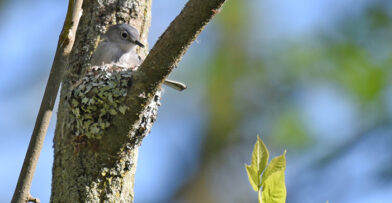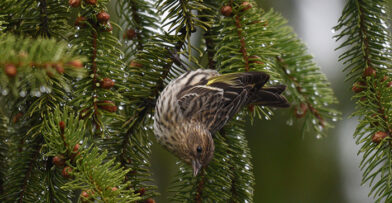The Yellow-rumped Warbler is the first of the enchanting warbler family to return to Wisconsin each spring. It’s arrival in early April or even late March, heralds a wave of warblers that reaches into late May and early June, a welcome sign of the influx of color and song that is to come!
Warblers are a family of neotropical migrant songbirds that spend their winters as far south as South America, and migrate each spring to their breeding grounds in Wisconsin and further north into Canada. Most warbler species are merely passing through Milwaukee for a short period, fueling up to continue their migration journey to their breeding grounds. There are around 35 warbler species that make their way through Milwaukee each year.
Yellow-rumped Warbler ID
Affectionately referred to by birders as “butter-butts” because of the pat-of-butter-shaped yellow mark on its rump, they are a delight to observe. Yellow-rumped Warblers are charcoal gray (can appear blueish), with a black mask on the face, white throat, with a yellow crown, yellow spots on their sides, and of course, their yellow rump. They are a larger warbler, averaging around 5.5 inches. Their song is a whistled warble.
Male Yellow-rumped Warblers return first to find and defend their territory. Female Yellow-rumps will follow after, migrating in large numbers throughout May. Males have a bolder color than the female, but the field marks on each are very similar. The female appears more pale overall, including the yellow-rump, the crown, and the yellow marks on the side. And even the bold grayish-blue of the males looks more like a faded gray on the female.
An Abundant Species
This is the most widespread and abundant species of warbler in North America, with their range reaching across the entire continental United States. Yellow-rumped Warblers overwinter in the Southern U.S. and Central America, and breed in coniferous forest in Northern Wisconsin, in the Pacific Northwest, Canada, and even into Alaska. Occasionally, a single Yellow-rumped Warbler will be found in December for the Milwaukee Christmas Bird Count, but the species in general winters further south. They have a versatile diet, and eat insects as well as berries. This is partly what allows them to overwinter further north than most other warbler species.
One Species or Two?
Until 1973, Yellow-rumps were actually considered two species. The Myrtle Warbler, which is the variety we mainly see in Wisconsin, and the Audubon’s Warbler, the Western counterpart named to honor John James Audubon distinguished by a bold yellow throat, were combined to the single species we have today when a hybrid breeding zone was discovered Some ornithologists are making a case that the Yellow-rumped Warbler could be divided back into separate species, but time will tell.
Yellow-rumped Warblers can be found in a wide variety of habitat during spring migration, and are likely found in the canopy of your own neighborhood. So grab a pair of binoculars and try to find this gem of spring right outside your front door!



